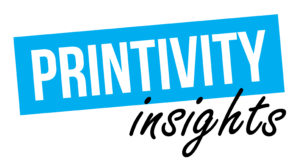Do you remember your favorite book as a kid? If so, you probably remember the book cover pretty clearly. Meaningful book covers tend to imprint on our memories. And children, especially before they develop a large vocabulary, fixate on visuals.
So if you’re designing a children’s book cover, how can you make it stand out? The best way is to choose a children’s book color palette that is eye-catching and that visually communicates the story. Read on to find out how!

How to Choose the Right Color Palette for Children’s Books
Two factors should be top of mind when selecting a children’s book color palette: the psychology of color and matching colors to the story.
Psychology of color simply means that certain colors evoke certain emotions. This is a subtle science, and it affects both adults and children. For example, red is a color that denotes aggression, warmth or power. A book with a red cover or prominent red accents signals fear, anger, or passion. Red is a good fit for a scary chapter book or picture book about emotions. Yellow is happy, meaning a yellow book cover signals an uplifting, lighthearted, feel-good story. Blue is, of course, calming. A dark blue cover is perfect for a bedtime story.
Be sure to pick a color not just because you like it, but because it reflects the tone of the story. Even though kids might not realize it consciously, these visual connections are highly influential to their experience with your book.
Generally, children are drawn to bright colors. Don’t be afraid to go loud and proud with your color palette for kids. What might feel tacky to an adult will look enticing to a young child. When designing a coloring book palette or a childrens’ paint palette for a paint-by-number book, the more colorful the better.
A children’s color palette emphasizing neutrals like black, white, gray, and brown will not catch a child’s eye, but may be the right choice to complement other colors. Dark colors should have a light or bright accent. Dark and neutral colors evoke a more serious tone, which is indeed appropriate for some topics. As the target age range goes up, designs will become more sophisticated and muted in tones.

2 Examples of Children’s Book Color Palettes
Let’s look at some real world examples of how successful books utilize a kids’ color palette for their target age range and genre.
For a Series, Consistency is Key
The Pigeon series by Mo Willems is a lighthearted picture book series. All Pigeon books have a silly cartoon of the iconic protagonist, a light blue pigeon, on the cover. It’s crucial to use a consistent design for each book cover in the series so that kids recognize the books as a group that goes together.
You can change the kids’ book color combinations from book to book, but certain design elements should be consistent. In The Pigeon series, each cover’s illustration always reflects the illustrations inside. The title is always in black typographic font inside a speech bubble.
The covers in this bestselling series keep it simple and consistent, with the light blue pigeon and a light-colored background, such as peach or light green. At times, the speech bubble encompassing the title is a light neutral, such as light gray or a lighter shade of the background color. Though these colors are not extra bright, the large font, the mischievous, recognizable, and lovable pigeon, and the consistent branding makes this an excellent example of a successful color palette for children’s books.
Note: There are some exceptions to the light colors in the covers, but as you’ll see, they all match the story. One is a school bus yellow background, fitting for The Pigeon HAS to Go to School! The dark navy background, reminiscent of the night sky, is appropriate for the bedtime book, Don’t Let the Pigeon Stay Up Late! What does the color brown mean to a kid? This typically brings to mind mud or dirt, which is why The Pigeon Needs a Bath! has a brown background.

Utilize Contrast to Your Advantage
The focal point of The Ogress and the Orphans by Kelly Barnill features a yellow-orange fire in the fireplace. This fire really pops because the rest of the cover contrasts the yellow-orange with navy blue and blue-gray. The characters mentioned in the title, an ogress and an orphan, are on the cover with hands outstretched towards each other. With the glowing fire in the fireplace, it’s clear that these characters are friends or seek connection with one another. Overall, this cover gives off warmth and friendship.
To emphasize the genre of fantasy, the script is in sloping script just shy of cursive. The colors are eye-catching, but are not overly bright. This communicates that this story is not for toddlers or early readers. In fact, it is a 400-page National Book Award Finalist geared toward ages 9-12, and the cover reflects that. The engaging yet slightly subdued colors are appropriate for the age this book is targeting.
Find the Perfect Color Palette: Storybooks & More
After you’ve chosen a storybook color palette that will catch any child’s eye, Printivity is here to help in the next step of the publishing journey: book printing. Our design experts are ready to assist you, and our printing specialists are the best in the business. Bring your children’s book to life and request a quote today!










